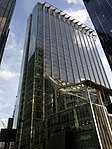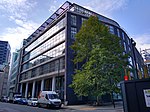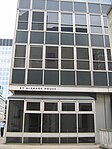Grub Street

Until the early 19th century, Grub Street was a street close to London's impoverished Moorfields district that ran from Fore Street east of St Giles-without-Cripplegate north to Chiswell Street. It was pierced along its length with narrow entrances to alleys and courts, many of which retained the names of early signboards. Its bohemian society was set amidst the impoverished neighbourhood's low-rent dosshouses, brothels and coffeehouses. Famous for its concentration of impoverished "hack writers", aspiring poets, and low-end publishers and booksellers, Grub Street existed on the margins of London's journalistic and literary scene. According to Samuel Johnson's Dictionary, the term was "originally the name of a street... much inhabited by writers of small histories, dictionaries, and temporary poems, whence any mean production is called grubstreet". Johnson himself had lived and worked on Grub Street early in his career. The contemporary image of Grub Street was popularised by Alexander Pope in his Dunciad. The street was later renamed Milton Street, which was partly swallowed up by the Barbican Estate development, but still survives in part. The street name no longer exists, but Grub Street has since become a pejorative term for impoverished hack writers and writings of low literary value.
Excerpt from the Wikipedia article Grub Street (License: CC BY-SA 3.0, Authors, Images).Grub Street
Chiswell Street, City of London
Geographical coordinates (GPS) Address Nearby Places Show on map
Geographical coordinates (GPS)
| Latitude | Longitude |
|---|---|
| N 51.520277777778 ° | E -0.090833333333333 ° |
Address
The Brewery & The Montcalm London City
Chiswell Street 52
EC1Y 4SA City of London (London Borough of Islington)
England, United Kingdom
Open on Google Maps











